Russian weapons that India could deploy in war

Indian Navy ships and submarines are now equipped with the powerful Klub.
SevmashThe supreme art of war is to subdue the enemy without fighting, wrote Sun Tzu. Social media is abuzz with calls for retaliatory strikes on Pakistan after the Uri terrorist attack which left 18 Indian Army soldiers dead, but the wiser policy would be to wait for the neighbouring country’s generals to press the self-destruct button. Pakistan is an artificially cobbled up country beset with insurmountable differences among its various ethnic groups. This makes it highly likely that the world’s top terror exporter will soon come apart at the hinges. India should use subterfuge to speed up Islamabad’s disintegration, and watch the drama from front row centre.
However, if more copycat attacks such as Uri take place, there will be increasing pressure from the public to act against Pakistan. In such a scenario, India could begin with surgical strikes against terrorist training centres. If Pakistan hits back with its air force or cruise missiles, it would probably lead to an outright declaration of war.
If war comes, these are the 10 weapons of Russian origin that will perform a critical role in the outcome of the conflict.
INS Vikramaditya
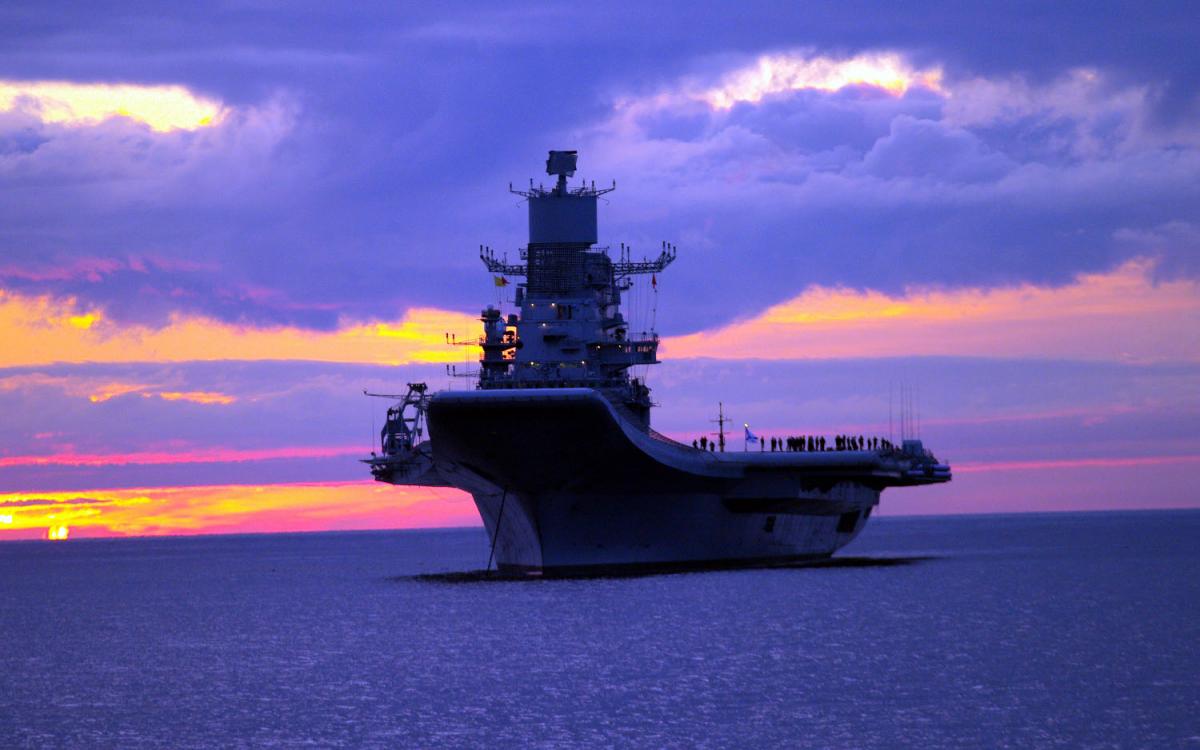 Source: Indian Navy
Source: Indian Navy
The 44,000 ton aircraft carrier will be the lynchpin of the Indian Navy’s war strategy. A carrier battle group (CBG) is one of the most heavily armed and feared forces at sea. The news of INS Vikramaditya and its sister warships steaming towards Pakistan could demoralise the enemy and force a quick capitulation.
With a complement of 36 aircraft, including 26 MiG-29K multirole fighters and 10 Kamov early warning as well as antisubmarine helicopters, the carrier can establish a cordon sanitaire in the Arabian Sea, denying Pakistan sea access. Foreign merchant vessels will also avoid entering the quarantine zone, preventing much needed supplies of food, fuel and ammunition from reaching the enemy. The powerful MiG-29K can not only defend the CBG from enemy warplanes and ships, but also strike at Pakistani shore-based targets such as Karachi and Gwadar.
INS Vikramaditya has a range of 25,000 km at 18 knots and endurance of 45 days. The floating city has 110 officers and 1500 sailors on board.
Sukhoi Su-30 warplanes
 Source: wikipedia.org
Source: wikipedia.org
The Su-30MKI – codenamed Flanker by NATO – is the Indian Air Force’s air dominance fighter. Like aerial storm troopers they can be relied upon to kick the door in for the rest of the armed forces to pour into Pakistan. It’s difficult to visualise how Pakistan Air Force (PAF) F-16s would withstand the Flanker’s firepower. It is lose-lose for Pakistan, which will be forced to defend its airspace by sending up F-16s and the Chinese-Pakistani JF-17s. Most of them won’t survive the Flanker barrage.
In the 1971 War, the last conflict in which the two air forces clashed, the PAF was blown out of the subcontinent’s skies within a week. Most PAF aircraft stayed well within Pakistani airspace for the latter half of the war and simply refused to engage IAF fighters.
In 1971, IAF aircraft lacked the range to pursue Pakistani Sabres and Starfighters that sought safe sanctuary close to the Iranian border. However, the Sukhoi’s 3000 km extended range will allow Indian pilots to sustain dogfights and chase the Pakistanis till they are shot down.
Once the PAF is neutralised, waves of Flankers can be launched against Pakistani military and nuclear installations. Su-30s armed with the BrahMos can knock out Pakistani troop and armour concentrations, air bases and naval targets. In the last war, it was the IAF that set first fire to Karachi harbour before the Indian Navy’s missile boats pulverised the remaining fuel storage tanks.
The Flanker is a heavy fighter-bomber which has 12 hard points for a vast complement of missiles, rockets and smart bombs. It can carry a maximum payload of 8000 kg although in a real life battle scenario, payload is compromised to enhance range and to gain the edge in dogfights.
The aircraft’s super-manoeuverability gives it a huge advantage against its western opponents. In multiple wargames, the Flanker family of aircraft has beaten western aircraft such as the F-15, F-35 and Eurofighter – like clubbing baby seals, to use the unfortunate comparison made by a western military officer who observed the simulation.
India has between 250 and 272 Flankers, with the number likely to cross the 300 mark in order to make up for retiring MiG-21 and MiG-27 aircraft.
Il-78 aerial refuelling tankers
 Source: Sergey Krivchikov/wikipedia.org
Source: Sergey Krivchikov/wikipedia.org
The Ilyushin Il-78 is the aerial refuelling tanker version of the large Il-76 transport aircraft. The Il-78 is a force multiplier as it allows multirole aircraft such the Su-30 to perform to their full capability. The aircraft has two removable 18,230-litre fuel tanks installed in the freight hold, allowing up to three aircraft to refuel in flight simultaneously.
Warplanes that can loiter for extended periods will, in theory, be able to conduct a range of missions. Because jet fighters are fuel guzzlers, their loiter time can be as short as 45 minutes for a MiG-21 to nearly three hours for the Su-30. With aerial refuelling, this can be enhanced. Indian pilots are known to conduct 10-hour missions, with the pilots taking turns to fly the aircraft.
An example of how refuelling capability can be a force multiplier is Flankers taking off from Thanjavur (the southernmost Sukhoi base), flying in fast and low – which consumes a huge quantity of fuel – over the Arabian Sea and surprising the Pakistanis from the rear.
Refuelling would also allow the IAF to attack Pakistan from the direction of Afghanistan. Indian aircraft can avoid landing in Afghanistan because that would give the Islamists and Taliban a handle for propaganda against the India-friendly administration and Afghan elites. The Pakistani defence forces would be completely mortified if India is able to achieve this geopolitical coup.
BrahMos missiles
 Source: EPA
Source: EPA
Strictly speaking, BrahMos, which is produced in India by BrahMos Corp, is an Indian missile. However, it is a Russian design that was mothballed after the Cold War ended. The missile is one of the few crown jewels of the Soviet empire which India managed to get its hands on. Russian and Indian engineers jointly work in this successful project which is owned by India and Russia in the ratio of 50.5:49.5.
BrahMos could be the first weapon to be fired from India’s side, initially in precision strikes against the many terrorist camps in places such as Muridke in Pakistani Punjab. If the scope of the conflict expands, these missiles can be used against Pakistani command, control and communication centres, and if launched in sufficient numbers India can despatch Pakistan into the stone age of communications within the opening hours of the conflict. If launched from bases in Rajasthan or Indian Punjab, the supersonic missiles will reach their targets in minutes, giving the Pakistanis not even time to say their prayers.
The BrahMos, therefore, is a first-strike weapon that could obliterate Pakistan’s defences as well as its offensive capabilities quickly, surgically and effectively.
Klub missiles
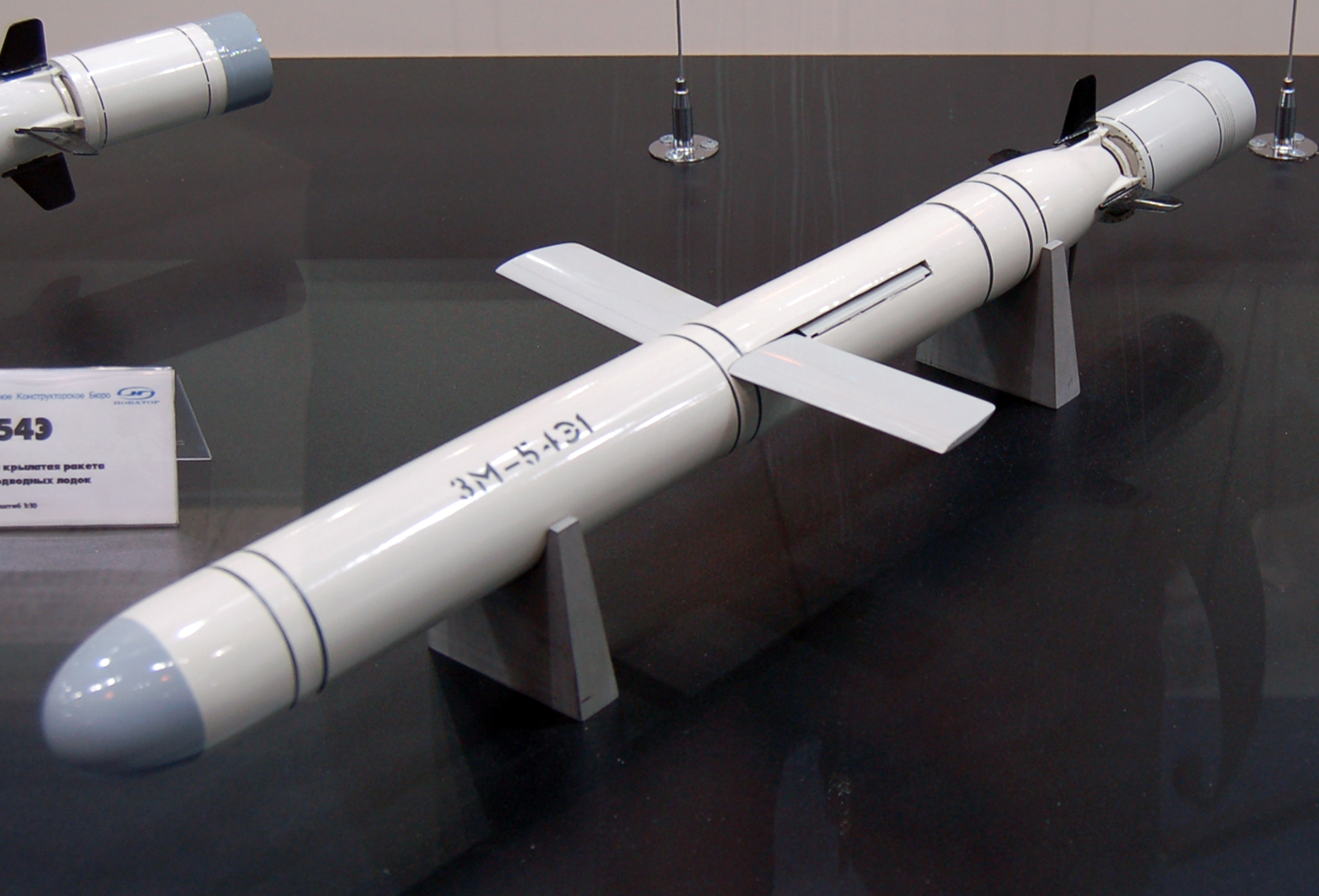 Source: wikipedia.org
Source: wikipedia.org
What gives a modern warship teeth are its missiles. Indian Navy ships and submarines are now equipped with the powerful Klub. This partly supersonic missile is the export version of the 2500 km Kalibr which the Russian Navy has used with devastating effect against the Islamic State as well as US-backed terror groups in Syria. Although the Klub version’s range is limited by the Missile Technology Control Regime (MTCR) to below 300 km, it is more than enough to strike at coastal targets from well within international waters.
The interesting fact about the Klub’s flight is that for the majority of its trajectory it travels at a high subsonic speed. Initially the missile flies at an altitude of 30-45 feet above the sea surface. Approximately 60 km away from the designated target, the Klub descends to 15 ft and accelerates to supersonic speed before smashing into the target. Because of their immense kinetic energy, Russian missiles of this class have cut warships into half during testing. It also makes them almost invulnerable to defensive counter measures.
The Klub is also capable of performing very high angled defensive and speedy manoeuvres. This is unlike the linear – and predictable – flight path of other anti-ship cruise missiles. The Klubs are expected to cause mayhem in Pakistani waters and on shored based targets in the opening hours of a conflict.
Russian submarines
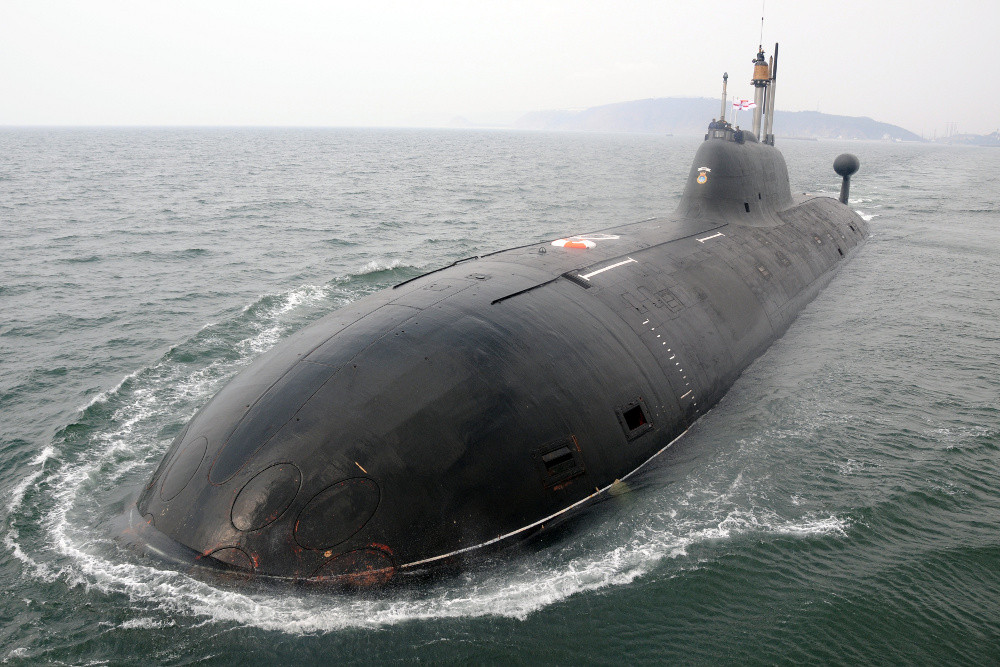
During the 1999 Kargil War, unknown to the Pakistanis, a Russian built submarine of the Indian Navy was lurking close to Karachi. How close? Well, it had Karachi harbour within the range of its torpedoes. Had the conflict widened outside Kashmir, the submarine would have unleashed a volley of torpedoes against Pakistani naval installations. India has around a dozen of these silent submarines, which can make life extremely difficult for Pakistani naval and commercial shipping.
Another deadly weapon in the Indian Navy is the nuclear powered submarine INS Chakra. Able to remain underwater for months – unlike conventional submarines that have to surface daily – INS Chakra is armed with 36 torpedoes and Klub anti-ship missiles. Although the n-submarine is intended to be a platform for familiarising Indian sailors with the operations and tactics of a nuclear powered and – more importantly, nuclear armed – submarine, INS Chakra will certainly be at the forefront, spooking the Pakistan Navy during war.
Multi-barrel rocket launchers
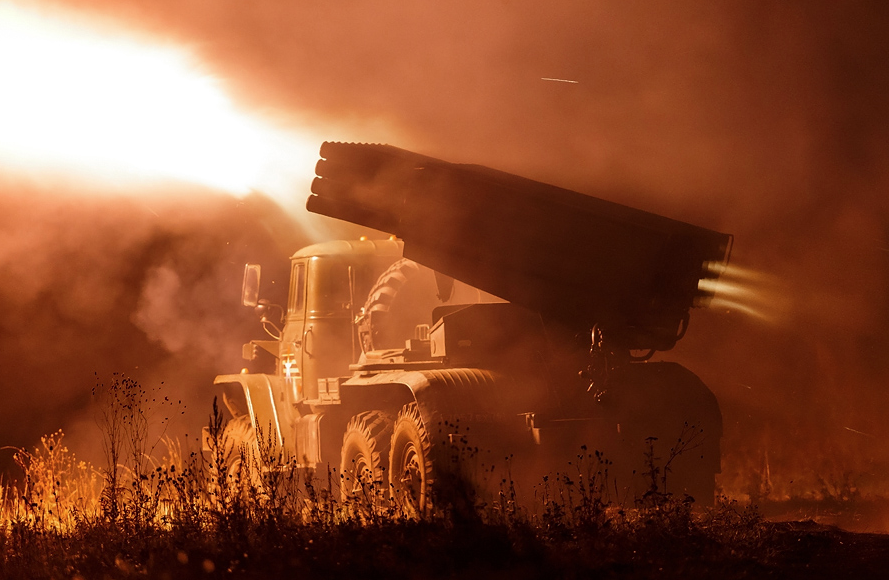 Source: mil.ru
Source: mil.ru
The multi-barrel rocket launcher (MBRL) is a signature Russian weapon which proved its worth during World War II when it rained the earthly equivalent of hellfire on German Army columns and hardened urban defences.
India has been one of the early adopters of the system, including the BM21 Grad and Smerch. The legendary Grad – used by dozens of modern armies worldwide – is a 40-barrel system that can fire its entire volley of 9-ft long missiles in 20 seconds to a distance of 20 to 40 km.
MBRLs have low precision compared with artillery but they rely on a large number of shells dissipating over an area for a certain hit rate on specific targets. Plus, because of the short warning time for the impact of the whole volley, the BM-21 is considered an effective weapon.
India has more than 150 Grad and 62 Smerch systems. Inspired by the Russian BMRL, India now produces the Pinaka system with a reported high rate of production of 5000 rockets per year. Together, the deadly threesome will carpet bomb the living daylights out of the Pakistani Army.
Stealth frigates
 Source: JSC “Baltic Shipyard” Yantar
Source: JSC “Baltic Shipyard” Yantar
In his book, ‘The Sea Power of the State’, Admiral Sergei Gorshkov, who transformed the Russian Navy into a global force, wrote: “Naval warfare aimed directly against land targets will play an ever greater part in any future major conflict.”
In the 1971 War, India’s Russian built missile boats had set fire to Karachi on the second day of the 14-day war. Continuing in the wake of those boats, India ordered – and later locally built – the Krivak III or Talwar stealth frigates.
Frigates are small when compared with top of the line destroyers, but as the Russian Navy proved in its ongoing war against the Islamic State, small ships armed with long-range missiles can deliver a knockout blow early on in a conflict.
The Talwars have a displacement of just 4000 tons, but with a speed of 32 knots they are among the fastest vessels in the ocean. They are capable of accomplishing a wide scale of missions in the ocean, primarily, finding and eliminating submarines and large surface ships.
Opinions differ as to Talwar’s stealth capabilities. According to Global Security, these missile frigates represent the cutting edge of technology in stealth, reach and punch. “They have ushered in highly automated integrated weapon platforms that are essential for blue water operations by the Indian Navy. Commissioning of these new frigates not only enhances India's defensive potential at sea but also dramatically affects the power equations in Asia.”
Some Talwars carry 14 vertically-launched Klub missiles while the newer vessels are equipped with the much larger and supersonic BrahMos anti-ship missiles. Raiding Pakistani coastal targets will be a lot easier with their stealth profile.
T-90 tanks
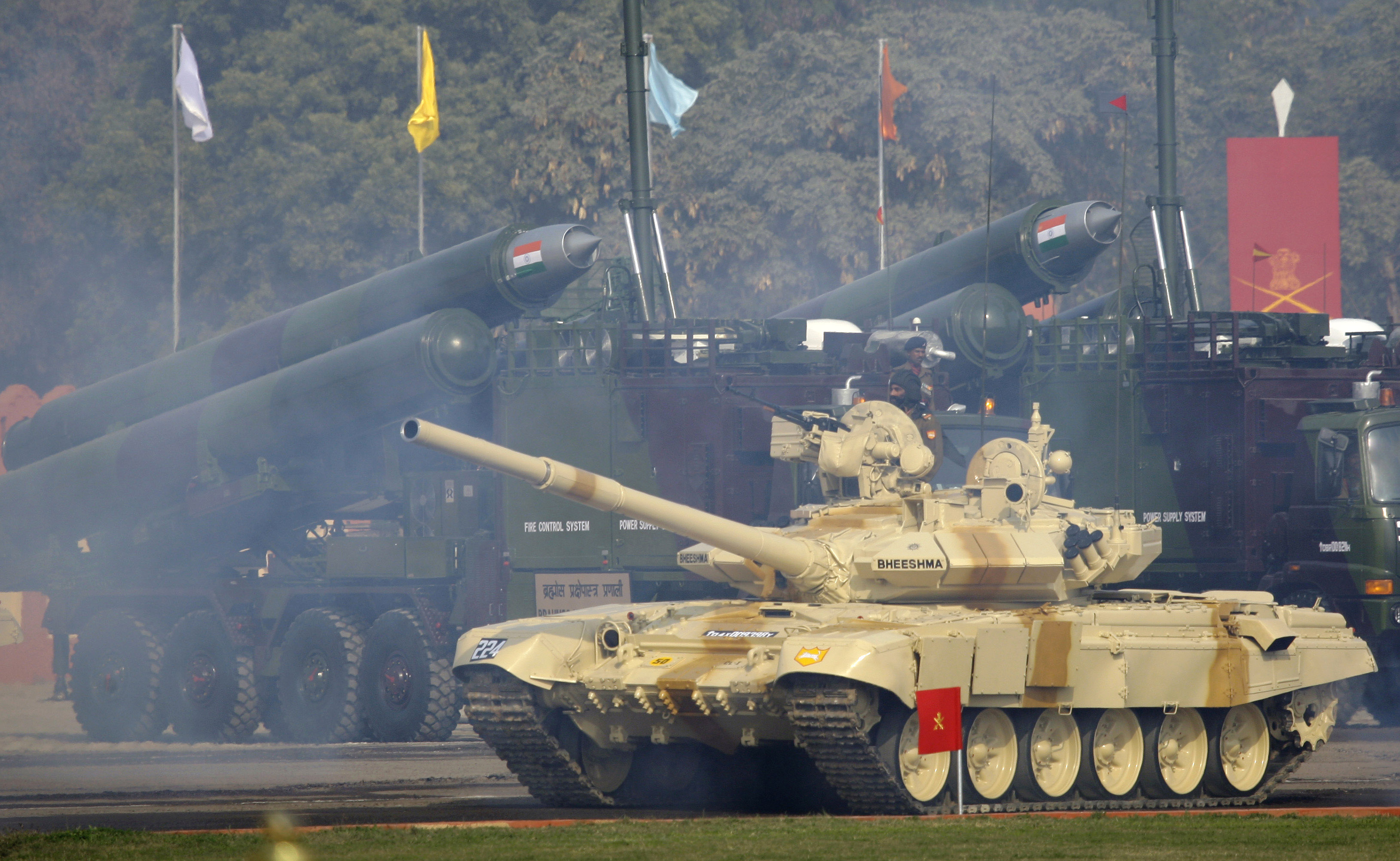 Source: AP
Source: AP
Like a rampaging rhino the T-90 main battle tank is expected to steamroll Pakistani defences with its 125 mm main gun. Able to literally leap across ditches, the Russian built “Flying Tank” will be the spearhead of the Indian Army’s armoured spearheads that will slice into Pakistan as part of the Cold Start. This strategy calls for rapid and shallow thrusts into enemy territory aimed not at destroying Pakistan’s existence but at capturing “bite-sized” territory – up to 80 km deep – that can be used as bargaining chips after the war.
The T-90 is suited to lightning war for its many qualities. First up, like rhino skin, the tank is equipped with third-generation active armour capable of withstanding an attack by tank rounds designed for the latest US and European tanks. In fact, the T-90 has become a celebrity of the blogosphere after it survived a direct hit by an American made TOW anti-tank missile in Syria earlier this year.
Unlike the hand-loaded Abrams, the T-90 uses an auto loading system for its main gun. Russian tankers have been heard saying the Abrams is a bolt action while the Russian T-90 is a semiautomatic. Also, it has a superior fire control system that allows it to fire with accuracy while on the move. The Indian Army has 1500 of these lean and mean killers, and more are being locally produced under licence.
Infantry support weapons
 Source: Vitaly V. Kuzmin
Source: Vitaly V. Kuzmin
Infantry support systems are the unsung heroes of the battlefield. Mostly on the low tech side, they nevertheless play a critical role in the thick of the fighting by providing the on-the-move – and vulnerable – infantry with effective cover.
The Indian Army operates around 100 units of the ZSU-23-4 Shilka self-propelled, radar guided anti-aircraft infantry support weapon. It dates back to the 1950s, but the Shilka’s arrival ensured NATO aircraft would never be used at low level in the battlefield.
The weapon is still in production more than 60 years after it was developed, proving that simplicity is a desirable trait in any weapon system. The 23-mm four-barrelled system is an extremely effective weapon against enemy attack aircraft and helicopters under every weather and light condition. It has a very high density, rate and accuracy of fire, as well as the capability for each of the four auto-cannons to fire its own type of projectile from separate belts.
Being a short-range anti-aircraft weapon, the ZSU-23-4 is not meant to be used against modern jet aircraft but as an infantry support system it remains unmatched. It is deadly for enemy light armoured vehicles. With its high rate of accurate fire, the system can neutralise tanks by destroying their gun sights, radio antennas or other vulnerable parts.
The other battlefield support system is the Tunguska, which was designed to perform roles the Shilka couldn’t. Unlike the gun-only Shilka, the Tunguska is a combined gun and missile system designed to provide day and night protection for infantry and tank regiments against low-flying aircraft, helicopters and cruise missiles in all weather conditions. Plus, its 30 mm shells have greater penetrative power.
India ordered 24 units of the Tunguska in 2005 and may have up to 184 in its armoury today.
Endgame
There will certainly be naive people – leftists and seculars – who will argue that India cannot fight a war against a nuclear armed rival. Before addressing that, here’s something you should do: stop seeing Pakistan as a rival. An enemy seven times smaller in economic terms is not a rival but an annoying detractor.
And as for war between nuclear armed rivals, it has already taken place – in 1999, in Kargil. In fact, the most telling statement on the war was made by India’s then Defence Minister George Fernandes. In January 2000 he observed that in precipitating the Kargil War, Pakistan “had not absorbed the real meaning of nuclearisation – that it can deter only the use of nuclear weapons, but not all and any war”.
The opinion of the writer may not necessarily reflect the position of RIR or its staff.
All rights reserved by Rossiyskaya Gazeta.
Subscribe
to our newsletter!
Get the week's best stories straight to your inbox